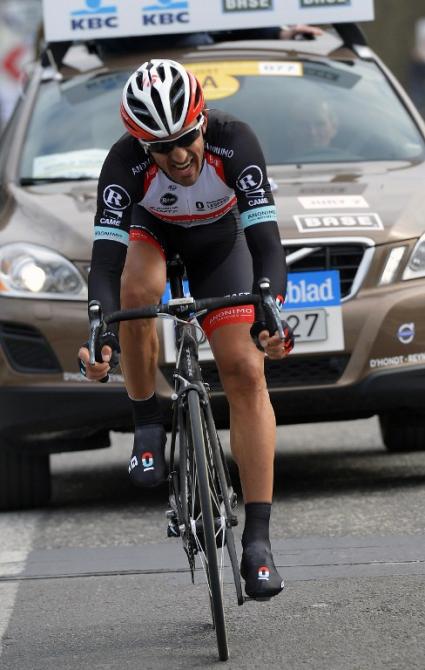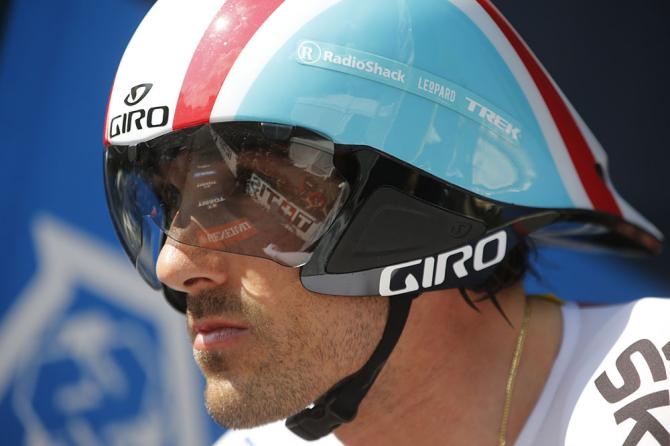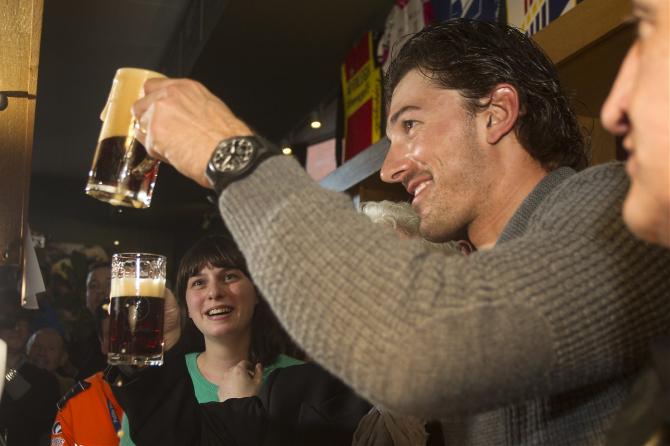Cancellara: Koppenberg will cause explosion at Tour of Flanders
Trek rider on new Ronde and Milan-San Remo routes



Fabian Cancellara believes that the revised route of the Tour of Flanders will make the race even more difficult and selective in 2014, pointing to the new positioning of the Koppenberg as a particularly important alteration to the course.
New Flanders course welcomed by Cancellara, Nuyens and Museeuw
Cancellara wants to repeat 2013 results
Cancellara: Sagan will have to cope with burden of pressure
First look: Fabian Cancellara's 2014 Trek Domane 6-Series
Cancellara working towards 2014 hour record attempt
Report: Cancellara considers Mallorca for hour record attempt
Dubai Tour: Cancellara insists he is not the favourite
Cancellara shrugs off disappointing time trial result in Dubai
“I think it will become even harder and more selective. We’ve seen in the past two years that there’s been a selection but not an explosion,” Cancellara told Cyclingnews at Trek Factory Racing's training camp in Benidorm. “The Koppenberg is important because of its position but it depends on who has the legs. The race will be more open but it will also be more difficult, because it’s not just the Paterberg that will make the selection anymore. The Koppenberg will cause the big explosion and then the drama will unfold on the final two climbs.”
The current Ronde finish at Oudenaarde was first introduced in 2012, and saw the Kwaremont and Paterberg replace the Muur van Geraardsbergen and Bosberg as the final two climbs of the race.
A winner on both courses – he famously dropped Tom Boonen on the Muur in 2010 and repeated the feat against Peter Sagan on the Paterberg this year – Cancellara is well-placed to compare the old and new versions of the Tour of Flanders, and his preference is for the uneven cobbles of the Kwaremont and Paterberg.
“I like the new finale, because it’s more ‘Flanders.’ Before you did more smooth climbs like Berendries and Tenbosse but now, with the Kwaremont and Paterberg, there’s more real pavé,” said Cancellara.
“The pavé on the Bosberg isn’t like that, and while the Muur is hard, it’s maybe not as hard as the others. But then the Muur and Bosberg have hosted some historic moments in cycling like Bartoli, Museeuw, Tafi and all those riders.”
Not that the Oudenaarde finale is completely to Cancellara’s liking. Like BMC’s Greg Van Avermaet, he would prefer if an alternative could be found to the flat, exposed finale that follows the Paterberg.
Get The Leadout Newsletter
The latest race content, interviews, features, reviews and expert buying guides, direct to your inbox!
“The only thing I don’t really like on the new course are the last eight or nine kilometres on the big road,” Cancellara said. “Maybe they could find a road that turns right and left instead of that big wide road. On the old course, the road to the finish [at Meerbeke] was more undulating, but then on the other hand, I prefer having more pavé climbs like we do on the current course.”
Milan-San Remo
The route of Milan-San Remo also changes in 2014, with the climb of the Pompeiana inserted ahead of the traditional finale over the Cipressa and Poggio. Winner of La Classicissima in 2008, second in 2012 and third last year, Cancellara was a perennial threat on the old course, but Trek Factory Racing manager Luca Guercilena believes he will have his work cut out to win next March.
“Obviously a San Remo with three climbs in row like that favours riders with different characteristics to Fabian,” Guercilena told Cyclingnews. “For Fabian things change, because there are fewer chances for an athlete of his weight to recover, so it will certainly be much more difficult to be competitive in the finale.”
For his part, Cancellara acknowledged that the new course eliminates the sprinters from contention, but he pointed out that the race’s distance, some 300 kilometres, will remain perhaps the key factor.
“A 300km race will always be hard in the finale, so we’ll have to see,” Cancellara said. “It’s an extra climb and it will hurt, but it depends on how the race unfolds. The attacks will come on that climb and the last one, but after 300km they are sort of ‘dead’ attacks. It’s possible that there’ll be a group of two or three at the finish instead of six or seven. But we’ll see. I haven’t thought about it too much.”

Barry Ryan was Head of Features at Cyclingnews. He has covered professional cycling since 2010, reporting from the Tour de France, Giro d’Italia and events from Argentina to Japan. His writing has appeared in The Independent, Procycling and Cycling Plus. He is the author of The Ascent: Sean Kelly, Stephen Roche and the Rise of Irish Cycling’s Golden Generation, published by Gill Books.